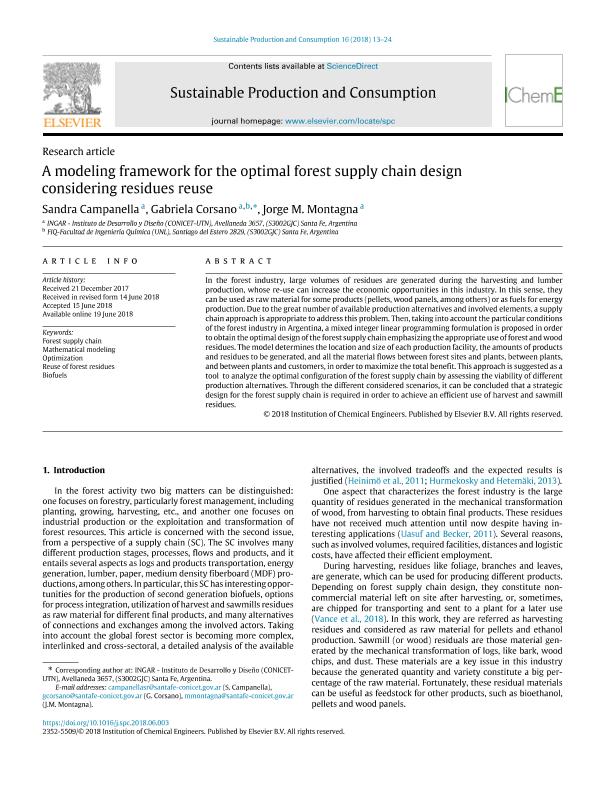Artículo
A modeling framework for the optimal forest supply chain design considering residues reuse
Fecha de publicación:
10/2018
Editorial:
Elsevier B.V.
Revista:
Sustainable Production and Consumption
ISSN:
2352-5509
Idioma:
Inglés
Tipo de recurso:
Artículo publicado
Clasificación temática:
Resumen
In the forest industry, large volumes of residues are generated during the harvesting and lumber production, whose re-use can increase the economic opportunities in this industry. In this sense, they can be used as raw material for some products (pellets, wood panels, among others) or as fuels for energy production. Due to the great number of available production alternatives and involved elements, a supply chain approach is appropriate to address this problem. Then, taking into account the particular conditions of the forest industry in Argentina, a mixed integer linear programming formulation is proposed in order to obtain the optimal design of the forest supply chain emphasizing the appropriate use of forest and wood residues. The model determines the location and size of each production facility, the amounts of products and residues to be generated, and all the material flows between forest sites and plants, between plants, and between plants and customers, in order to maximize the total benefit. This approach is suggested as a tool to analyze the optimal configuration of the forest supply chain by assessing the viability of different production alternatives. Through the different considered scenarios, it can be concluded that a strategic design for the forest supply chain is required in order to achieve an efficient use of harvest and sawmill residues.
Archivos asociados
Licencia
Identificadores
Colecciones
Articulos(INGAR)
Articulos de INST.DE DESARROLLO Y DISEÑO (I)
Articulos de INST.DE DESARROLLO Y DISEÑO (I)
Citación
Campanella, Sandra Romina; Corsano, Gabriela; Montagna, Jorge Marcelo; A modeling framework for the optimal forest supply chain design considering residues reuse; Elsevier B.V.; Sustainable Production and Consumption; 16; 10-2018; 13-24
Compartir
Altmétricas




